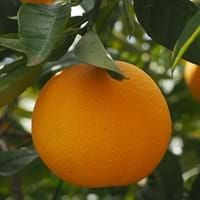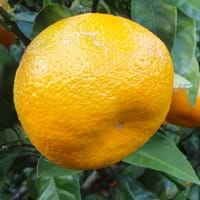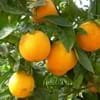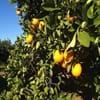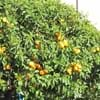Life Span
Perennial
Annual
Origin
Southeastern Asia
China, Japan
Types
Nules , Nadorcott
Not available
Number of Varieties
Not Available
Habitat
Cold Regions
Subtropical climates
USDA Hardiness Zone
8-11
8-11
Sunset Zone
H1, H2, 8, 9, 12, 13, 14, 15, 16, 17, 18, 19, 20, 21, 22, 23, 24
H1, H2, 8, 9, 12, 13, 14, 15, 16, 17, 18, 19, 20, 21, 22, 23, 24
Habit
Oval or Rounded
Spreading
Flower Color
White, Red, Purple
White
Flower Color Modifier
Bicolor
Bicolor
Fruit Color
Red, Orange
Green, Orange, Orange Red
Leaf Color in Spring
Green, Dark Green
Green, Dark Green
Leaf Color in Summer
Green, Dark Green
Green, Dark Green
Leaf Color in Fall
Green, Dark Green
Green, Dark Green
Leaf Color in Winter
Light Green
Light Green
Leaf Shape
Acuminate
Acicular
Plant Season
Spring, Summer, Fall, Winter
Spring, Summer, Fall, Winter
Sunlight
Full Sun, Partial Sun
Full Sun, Partial Sun
Growth Rate
Medium
Medium
Type of Soil
Loam, Sand
Loam, Sand
The pH of Soil
Acidic, Neutral
Acidic, Neutral, Alkaline
Soil Drainage
Well drained
Well drained
Bloom Time
Spring, Late Spring
Early Spring, Spring, Late Winter
Tolerances
Drought, Light Frost
Drought
Where to Plant?
Ground
Ground, Pot
How to Plant?
Seedlings
Budding, Grafting, Seedlings
Plant Maintenance
Medium
Medium
Watering Requirements
Do not let dry out between waterings, Keep the Soil well drained, Requires consistently moist soil
Keep the ground moist but not water-logged, Medium
In Summer
Lots of watering
Lots of watering
In Spring
Moderate
Moderate
In Winter
Average Water
Average Water
Soil pH
Acidic, Neutral
Acidic, Neutral, Alkaline
Soil Type
Loam, Sand
Loam, Sand
Soil Drainage Capacity
Well drained
Well drained
Sun Exposure
Full Sun, Partial Sun
Full Sun, Partial Sun
Pruning
Prune in the late winter or spring, Remove damaged leaves, Remove dead branches, Remove dead leaves
Remove branches, Remove damaged leaves, Remove dead branches, Remove dead leaves
Fertilizers
All-Purpose Liquid Fertilizer, Equal amount of N,P,K
Apply N-P-K, Fertilize the first year
Pests and Diseases
Black sooty mold, Citrus canker
Anthracnose, Aphids, Black root rot, Brown Rot, Mushroom root rot
Plant Tolerance
Drought, Light Frost
Drought
Flower Petal Number
Single
Single
Fragrant Bark/Stem
Yes
Yes
Foliage Texture
Medium
Medium
Foliage Sheen
Glossy
Glossy
Attracts
Birds, Butterflies
Birds, Butterflies
Allergy
Mouth itching, Throat itching
Not Available
Aesthetic Uses
Cottage Garden, Farmland
Showy Purposes
Beauty Benefits
Not Available
Good for skin and hair
Environmental Uses
Air purification
Agroforestry, Food for birds
Medicinal Uses
Digestive, Vitamin C
Bone strength, Kidney Stones, osteoporosis, Stomach Cancer, Vitamin C
Part of Plant Used
Fruits
Fruits
Other Uses
Added to salads, Culinary use
Food for animals, Used as a nutritious food item, Used As Food, Used as Ornamental plant
Used As Indoor Plant
No
No
Used As Outdoor Plant
Yes
Yes
Garden Design
Container, Edible, Feature Plant, Fruit / Fruit Tree, Houseplant, Topiary / Bonsai / Espalier, Tropical
Container, Edible, Feature Plant, Fruit / Fruit Tree, Hedges, Screening / Wind Break, Topiary / Bonsai / Espalier
Botanical Name
CITRUS reticulata
CITRUS unshiu
Common Name
Clementine, Mandarin, Tangerine
Satsuma, unshu mikan, cold hardy mandarin
In Hindi
clementine
satsuma
In German
Clementine
satsuma
In French
Citrus clementina
satsuma
In Spanish
Citrus x clementina
satsuma
In Greek
clementine
satsuma
In Portuguese
clementine
satsuma
In Polish
clementine
Satsuma
In Latin
clementine
Satsuma
Phylum
Magnoliophyta
Magnoliophyta
Class
Magnoliopsida
Magnoliopsida
Order
Sapindales
Sapindales
Clade
Not Available
Angiosperms, Eudicots, Rosids
Tribe
Not Available
Citreae
Subfamily
Not Available
Citroideae
Importance of Clementine and Satsuma
Want to have the most appropriate plant for your garden? You might want to know the importance of Clementine and Satsuma. Basically, these two plants vary in many aspects. Compare Clementine and Satsuma as they differ in many characteristics such as their life, care, benefits, facts, etc. Every gardener must at least have the slightest clue about the plants he wants to plant in his garden. Compare their benefits, which differ in many ways like facts and uses. The medicinal use of Clementine is Digestive and Vitamin C whereas of Satsuma is Bone strength, Kidney Stones, osteoporosis, Stomach Cancer and Vitamin C. Clementine has beauty benefits as follows: Not Available while Satsuma has beauty benefits as follows: Not Available.
Compare Facts of Clementine vs Satsuma
How to choose the best garden plant for your garden depending upon its facts? Here garden plant comparison will help you to solve this query. Compare the facts of Clementine vs Satsuma and know which one to choose. As garden plants have benefits and other uses, allergy is also a major drawback of plants for some people. Allergic reactions of Clementine are Mouth itching and Throat itching whereas of Satsuma have Not Available respectively. Having a fruit bearing plant in your garden can be a plus point of your garden. Clementine has showy fruits and Satsuma has showy fruits. Also Clementine is not flowering and Satsuma is not flowering . You can compare Clementine and Satsuma facts and facts of other plants too.
